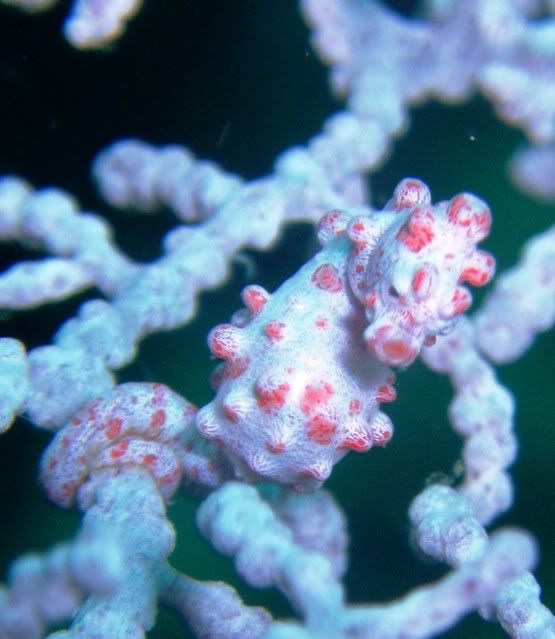under water
Contributor
This is a link to an article that was just published by Dr Richard Smith on what he considers to be a Code of Conduct for Diving with & Photographing Pygmy Seahorses .
The article and downloadable PDF can be found at Code of Conduct for Diving with & Photographing Pygmy Seahorses | Richard Smith
To summarize,
... when care is not taken to observe and photograph them, the delicate seahorses and their seafan home can easily be damaged or killed by poor diver practices. Luckily, following surveys of several hundred divers, I found that they overwhelmingly support a Code of Conduct to protect pygmy seahorses and that avoiding only a few actions can significantly reduce harassment of the seahorses.
Summary of Code of Conduct:
1. Do Not Touch Pygmy Seahorses
2. Do Not Touch their Gorgonian
3. Do Not Use a Torch/Flashlight
4. Five Photo Limit per Diver
5. No Artificial Light for Video
6. No Night Diving with Pygmy Seahorses
7. Beware of the Surrounding Environment
Background to the Code of Conduct:
I spent many hundreds of hours observing natural pygmy seahorse behaviour, but also the interactions between divers and seahorses. I found that certain actions by divers cause stress to these miniature fish, which can have major implications for their health, reproduction and even survival.
Pygmies also have many other threats to contend with, such as destruction of their coral reef habitat and their reliance on healthy seafans for their survival. During my population estimates I found that they have one of the lowest population densities of any unexploited seahorse yet studied. Their reliance on seafans means that they can easily be protected within marine protected areas, however these areas are frequented by divers. Thus the aim of this Code of Conduct is to minimise the impact divers have on seahorse populations.
The seafan (gorgonian) home of the seahorses is also hugely susceptible to damage. Seafans are very delicate and slow growing, with large seafans easily reaching 100 years of age. Sadly, when they come into contact with the equipment, camera or bubbles of divers they can be damaged so much they are no longer inhabitable by seahorses. Pygmy seahorses require a healthy, living seafan where they spend their entire adult life on a single seafan, meaning that if the seafan dies so does the seahorses.
The article and downloadable PDF can be found at Code of Conduct for Diving with & Photographing Pygmy Seahorses | Richard Smith
To summarize,
... when care is not taken to observe and photograph them, the delicate seahorses and their seafan home can easily be damaged or killed by poor diver practices. Luckily, following surveys of several hundred divers, I found that they overwhelmingly support a Code of Conduct to protect pygmy seahorses and that avoiding only a few actions can significantly reduce harassment of the seahorses.
Summary of Code of Conduct:
1. Do Not Touch Pygmy Seahorses
2. Do Not Touch their Gorgonian
3. Do Not Use a Torch/Flashlight
4. Five Photo Limit per Diver
5. No Artificial Light for Video
6. No Night Diving with Pygmy Seahorses
7. Beware of the Surrounding Environment
Background to the Code of Conduct:
I spent many hundreds of hours observing natural pygmy seahorse behaviour, but also the interactions between divers and seahorses. I found that certain actions by divers cause stress to these miniature fish, which can have major implications for their health, reproduction and even survival.
Pygmies also have many other threats to contend with, such as destruction of their coral reef habitat and their reliance on healthy seafans for their survival. During my population estimates I found that they have one of the lowest population densities of any unexploited seahorse yet studied. Their reliance on seafans means that they can easily be protected within marine protected areas, however these areas are frequented by divers. Thus the aim of this Code of Conduct is to minimise the impact divers have on seahorse populations.
The seafan (gorgonian) home of the seahorses is also hugely susceptible to damage. Seafans are very delicate and slow growing, with large seafans easily reaching 100 years of age. Sadly, when they come into contact with the equipment, camera or bubbles of divers they can be damaged so much they are no longer inhabitable by seahorses. Pygmy seahorses require a healthy, living seafan where they spend their entire adult life on a single seafan, meaning that if the seafan dies so does the seahorses.





